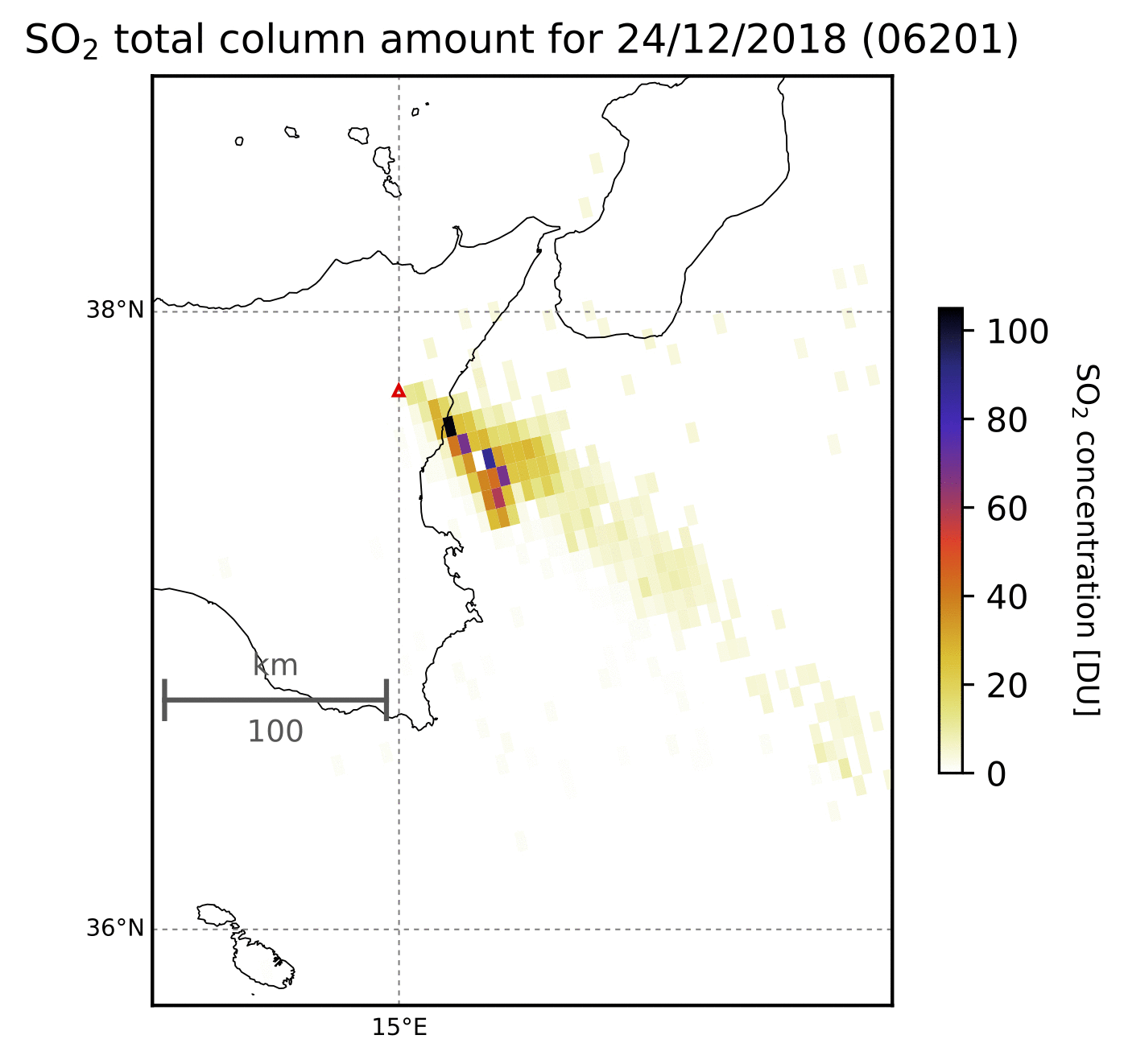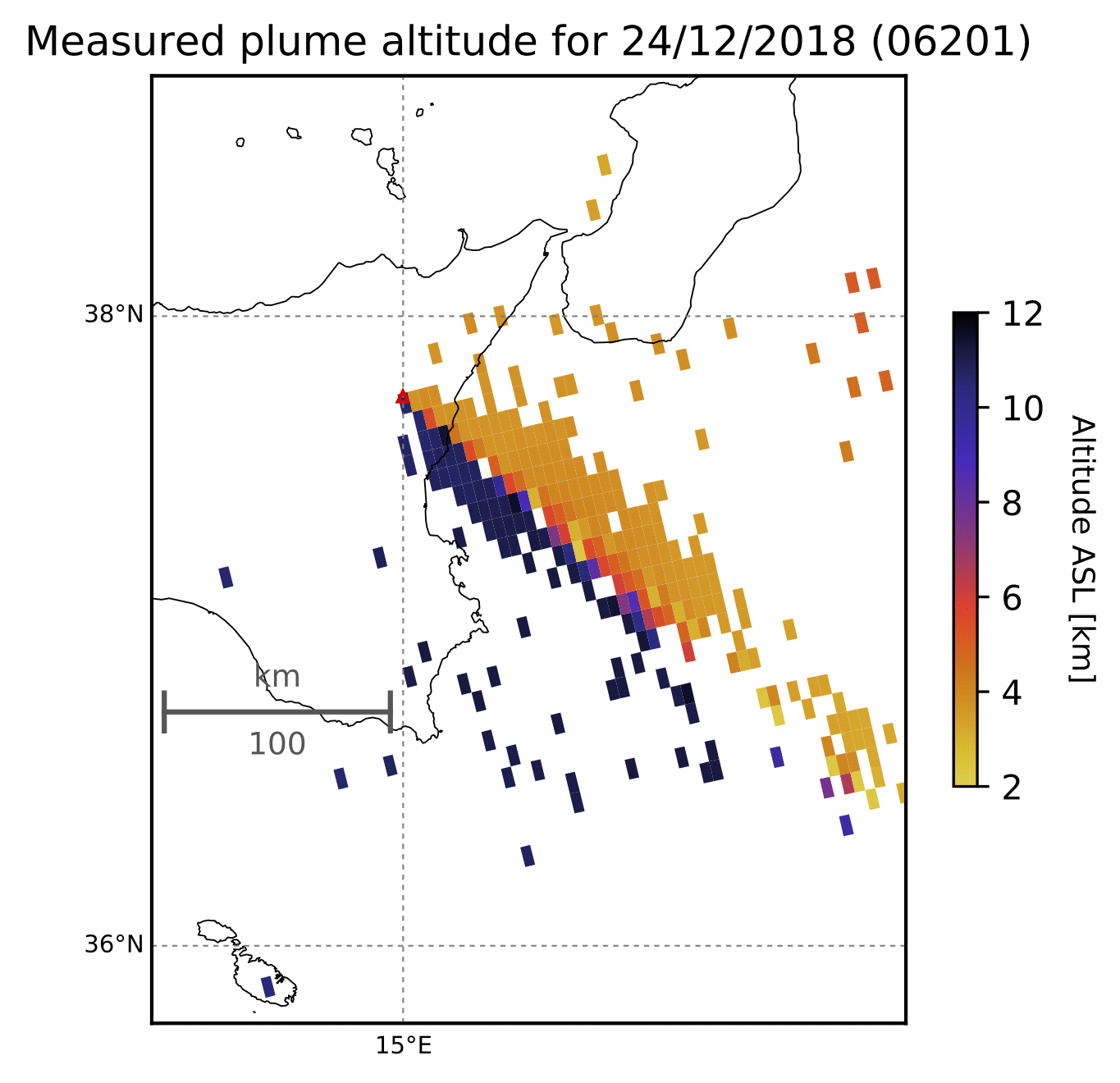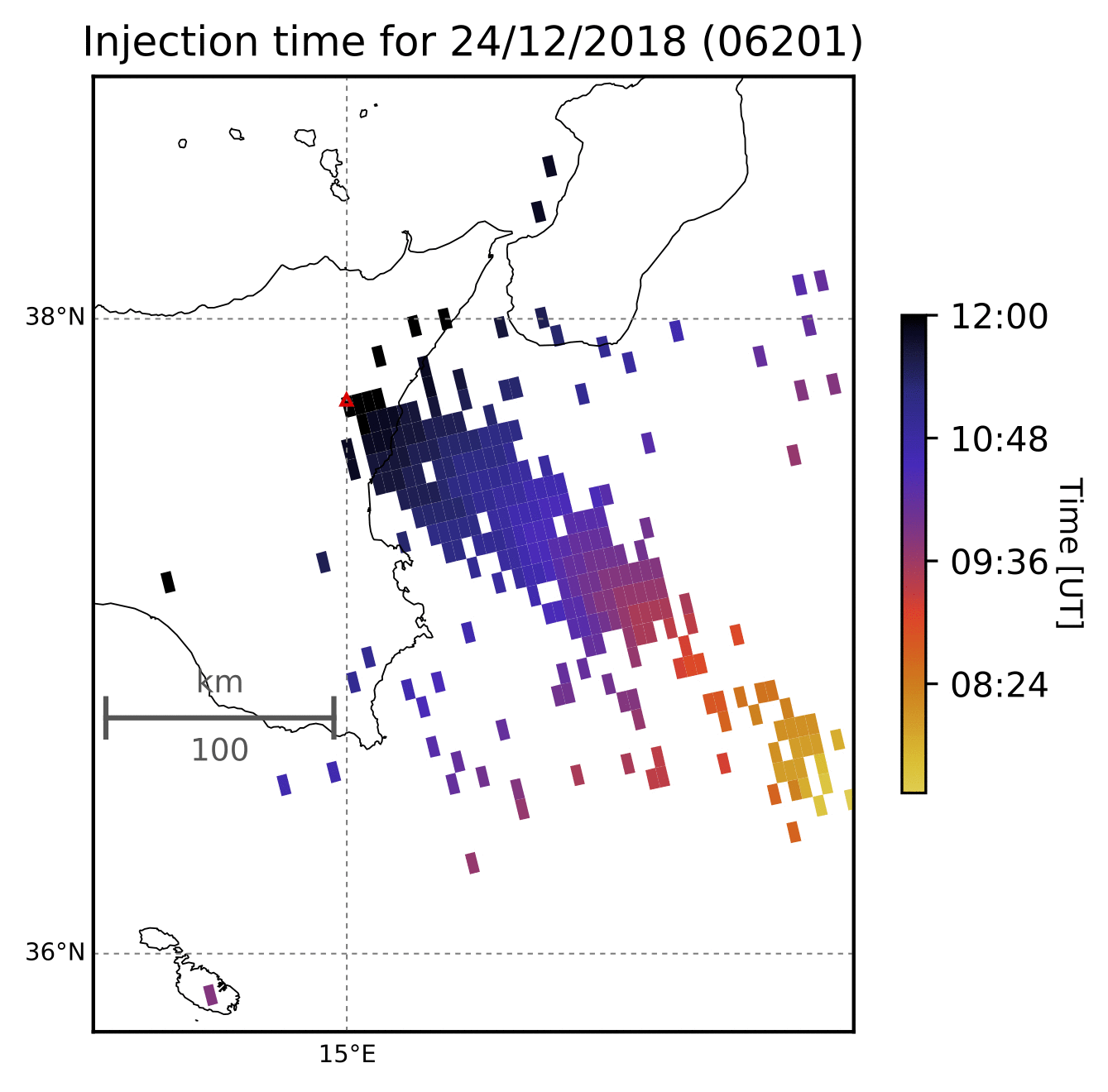Case studies of the SO2 flux retrieval from TROPOMI satellite data using PlumeTraj
Mt. Etna: 24-30 December 2018
On 24 December 2018, a nearly 2 km fissure opened in the summit and upper SE flank area of the volcano. Lava flows, Strombolian activity, and fire fountaining were observed at the fissure and at summit vents, along with a gas and ash plume. The eruption waned in the afternoon of 24 December before increasing again in the early evening. The effusive activity began to decrease in intensity on 26 December and active feeding of the lava flows ceased on 27 December, though the front continued to move.The SO2 plume was measured from 24-30 December 2018. Source: Etna activity report at Global Volcanism Program PlumeTraj was applied to the SO2 plumes observed by TROPOMI throughout the eruption. A selection of results are shown below. All gifs loop through from 24th to 30th December 2018.



